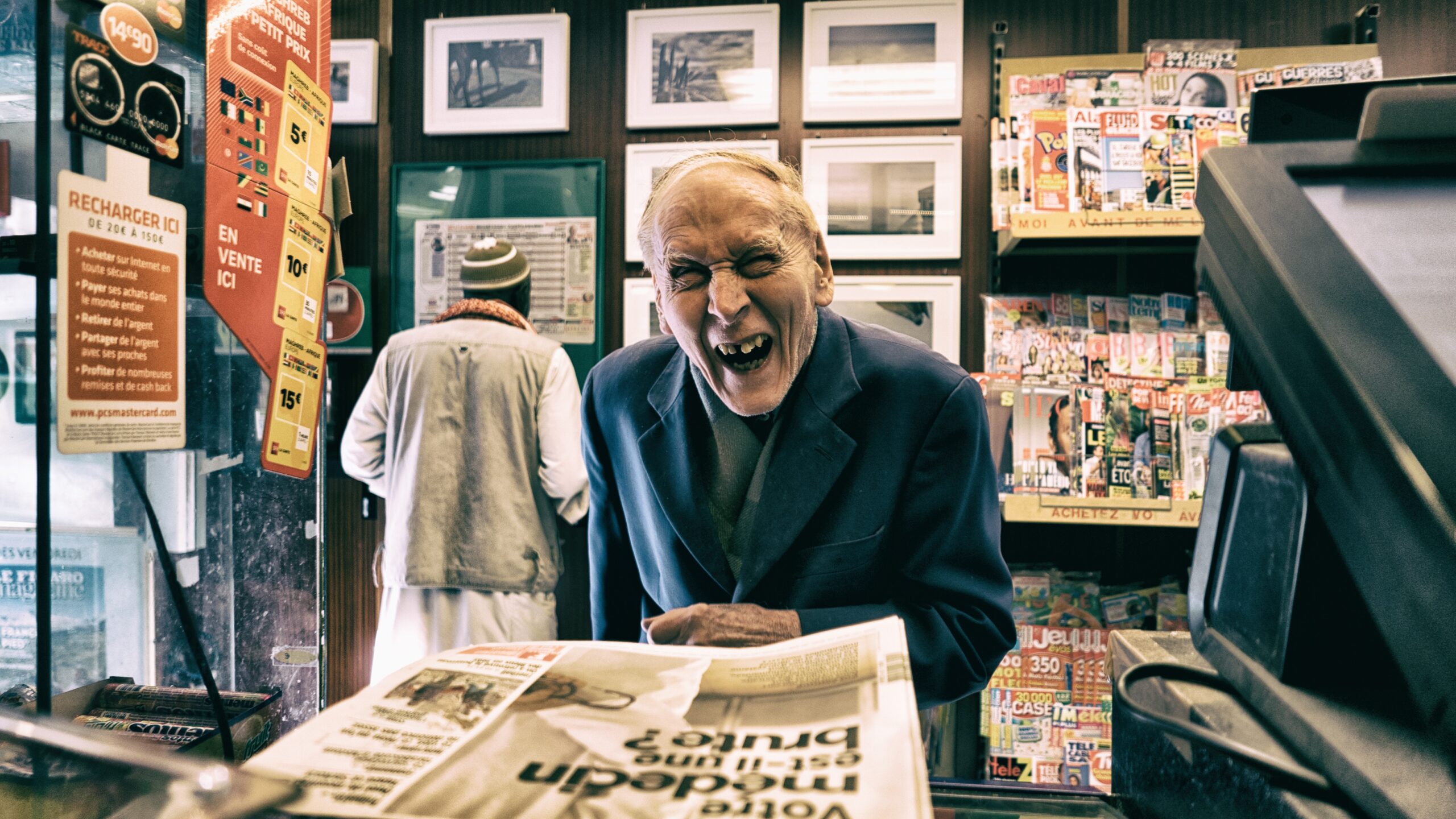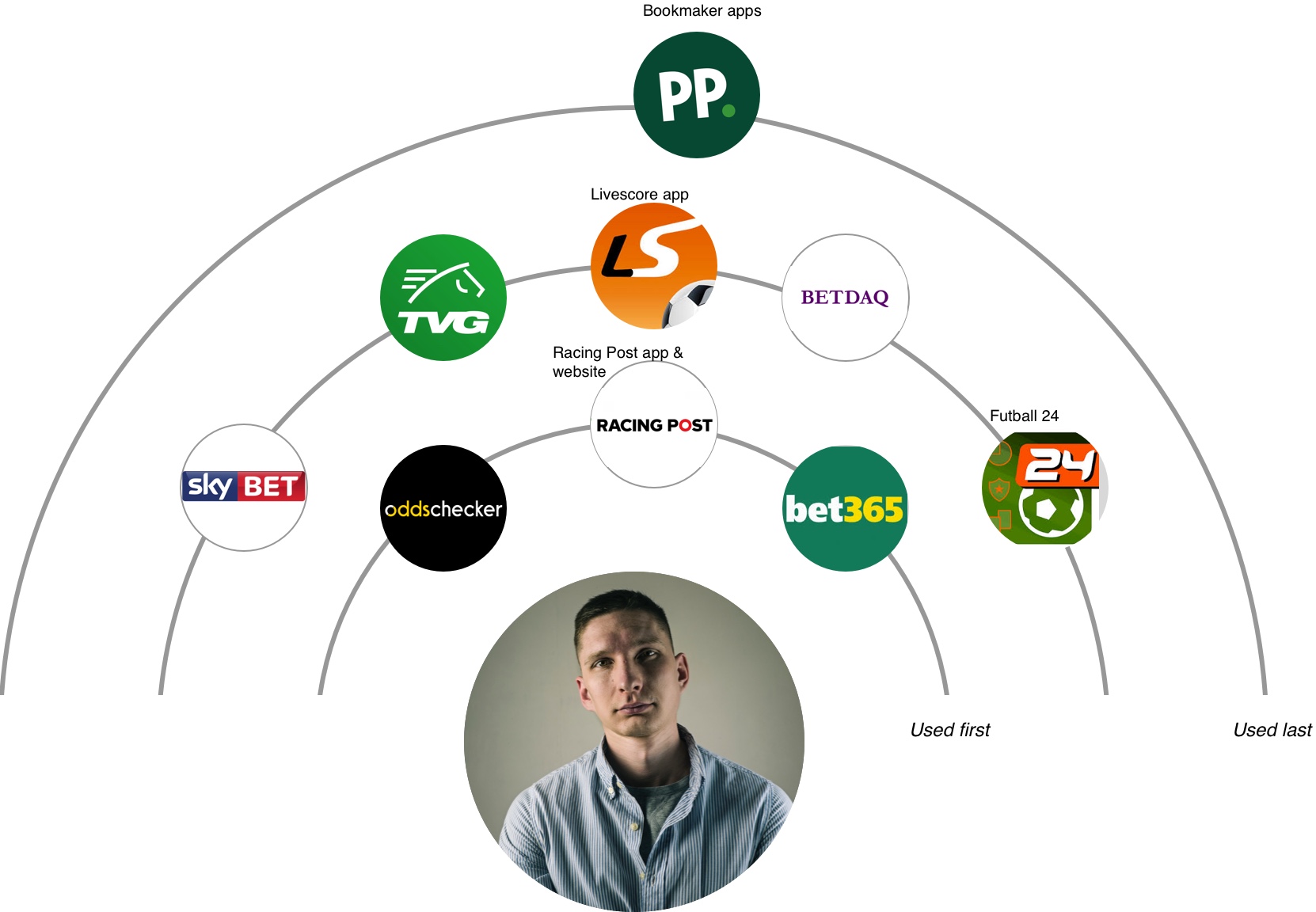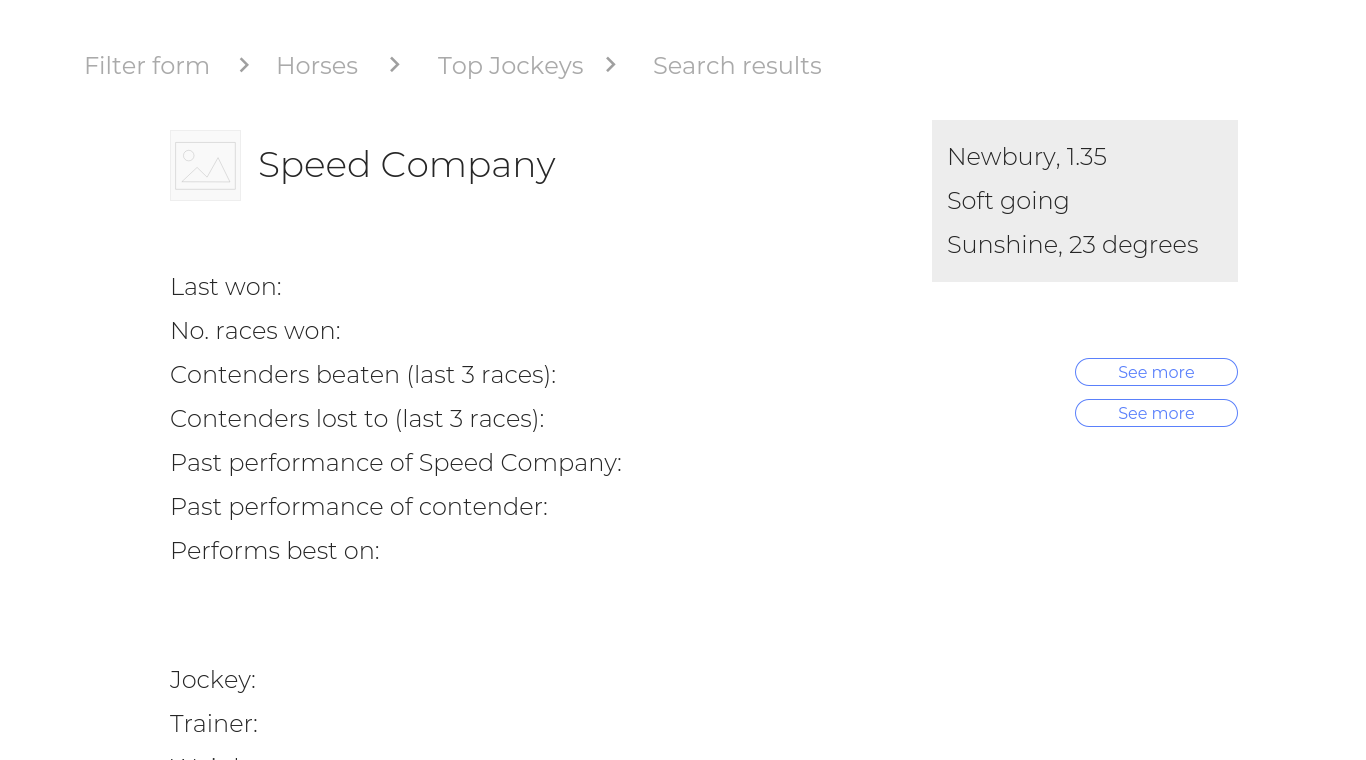Understanding how to transition the print BSD into digital.

Racing Post is a daily print and online newspaper, publishing data, opinions and analysis on horse racing and other sports. This research surrounded the Betting Shop Display (BSD); a print newspaper displayed in bookmakers showing racing fixtures and form details for the horses. The BSD has been a core part of the retail betting environment for over 20 years and predominantly remains a horse racing and greyhound product.

When the BSD was first launched in 1996, horse racing and greyhounds accounted for 90% of betting shop turnover. However, the landscape of betting shops has changed dramatically.
With the introduction of Self Service Bettings Terminals (SSBTs), Fixed Odds Betting Terminals (FOBTs) and online betting which all cater for other sports, there are concerns about the relevance of the BSD in the modern-day betting shop. I was brought in to support the design of a digital BSD product.
For three months I immersed myself in the betting shop environment. I carried out generative research to understand who used the BSD, which parts of the paper were most useful and why, and how the form data was used by different types of bettors to inform their betting workflows. This research informed a fundamental redesign of the existing BSD newspaper and the information architecture of its digital equivalent.
Understanding how to transition the print BSD into digital.
Staying relevant in the new betting shop environment without alienating an existing customer base.
Enticing sport betters into horse racing.



By capturing how the BSD was displayed in shops, including what customers asked for, I could start to make inferences about betting behaviour. It also gave me an initial indication of BSD usability issues.
At the start of this project, the b2b team knew the BSD was four times larger than the space available in the average betting shop. They relied on staff changing the pages throughout the day .


To get a sense of how typical it was for staff to use the BSD in this way I captured self-reported activity from a larger audience.
It confirmed that this pattern of behaviour wasn’t just a reflection on staff disengagement, but on what punters were specifically asking staff to display.
“Just this morning someone came in and placed £200 on a 6pm race and £200 on a 7pm race. About 50% of punters will prepare their bet for the evening in the morning.”

Speaking with staff had revealed that some horse races were more preferred by customers than others. I wanted to dig into why.
I ran contextual inquiries to observe how bets were placed in a shop, and included questions about what customers did before, during and after their visit. This helped build a picture of our betting shop customers and explained their betting style.
I originally segmented customer groups based on time (rich vs poor) and technology use (literate vs illiterate).

Thematic analysis helped me establish key patterns between a person’s betting style and the information they seek when placing a bet, and helped inform the betting shop customer personas seen above.
Thematic analysis proved to be an essential process because it helped persuade stakeholders that a great number of punters don’t use form information when placing a bet.

Thematic analysis allowed me to create user journeys for each persona based on robust data.



This research generated 44 need statements, supporting three personas and the additional needs identified for punters to bet on international horse racing.
“Walter, a dedicated form better, needs to compare a horse against who it has previously beaten in order to have confidence in the bet.”
At the same time, I ran first click usability tests with the persona groups to test how well punters knew the BSD race cards.
I wanted to validate whether form betters understood the BSD race card as well as we thought. Likert scales also helped me determine the relative importance of each figure for betting.
This process helped us identify which BSD figures were important but needed re-labelling, and which figures could be removed in order to simplify the race cards.

I put together some low-fi wireframes as one method of communicating a vision for the BSD. The most important aspect was three different flows designed for the form better, lucky punter and odds better: https://pr.to/4JPN63/

This project was the first time
It led to
Upon reflection